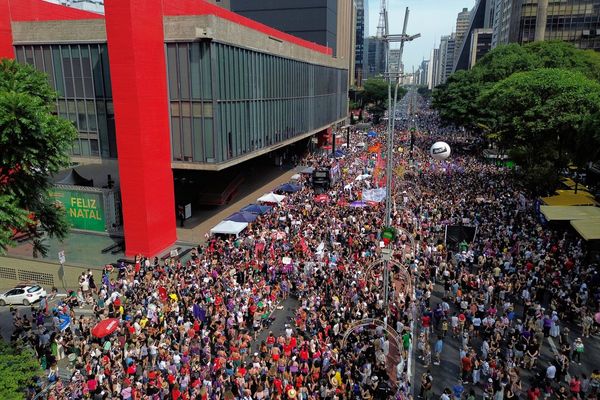
You might walk past multiple stores in your neighborhood and still feel like you’re living in a “grocery desert.” That’s because access to groceries isn’t just about proximity—it’s about which stores are there, what they sell, how expensive things are, and whether you can realistically get there. Understanding why grocery deserts form even in cities that seem well-stocked helps residents, policymakers, and community groups push for better solutions. If you know the hidden barriers, you can demand changes, avoid unhealthy food traps, and improve your household food options. Below are the key reasons grocery deserts persist, even where grocery stores exist.
Stores Don’t Sell Fresh, Affordable Food
A city might have plenty of stores, but many are convenience stores, small corner markets, or dollar stores that stock mostly processed, shelf-stable goods. These stores often don’t carry fresh fruits, vegetables, lean meats, or whole grains—or if they do, these items are overpriced and spoil quickly. Lack of fresh choices means people in that area still have to travel farther or spend more to acquire healthy food. Even with multiple stores around, quality matters—if what’s offered is mostly junk, it’s a practical desert. For many residents, cost and food quality are as big a barrier as distance.
Transportation and Mobility Barriers
Having grocery stores nearby doesn’t help much if you can’t get to them easily. Many low-income residents don’t own cars and depend on public transportation, which may be unreliable, indirect, or costly. Sidewalks and safe crosswalks might also be lacking, which makes walking or biking dangerous. Even when there is a store within walking distance, carrying groceries on public transit or walking long blocks becomes a physical and financial burden. When transportation is challenging, the local stores you can reach become your only realistic choice, even if they sell less healthy options.
Store Hours, Safety, and Store Condition Issues
Sometimes a grocery store is there, but its hours, condition, or reputation make it less accessible in practice. If stores close early, don’t open on weekends, or reduce hours in low-traffic areas, they may be closed at times when many people shop (after work or weekends). Safety is another concern: if the area around the store feels unsafe, people may avoid going at night or with children. Poor upkeep, dirty produce, or badly maintained refrigeration also turn people away or make fresh food unpalatable. Even if a store technically exists nearby, if it doesn’t feel safe, clean, or welcoming, it may as well not exist for many residents.
Affordability Blocks Access Despite Proximity
Even when there are full grocery stores in your neighborhood, prices can make healthy food unaffordable. Fresh produce, lean meats, and organic or whole-grain options often carry price premiums that add up. For someone on a tight budget, packaged and processed foods are cheaper per calorie, even if far less nutritious. Additionally, sales, distribution, or supply costs are often higher in underserved urban areas, pushing prices even higher. So, people may choose cheaper, less healthy food even though “good” grocery options are technically close. This economic barrier keeps grocery deserts alive.
Market Dynamics and Retailer Risk Aversion
Grocery chains often avoid investing in low-income neighborhoods due to perceived risks of low profit, crime, or vandalism. Real estate vacancies, past disinvestment, or redlining histories make store owners wary of opening or maintaining full-service supermarkets in certain areas. Smaller stores may survive, but they often can’t afford to stock perishable goods or invest in infrastructure like refrigeration. Subsidies or incentive programs are sometimes insufficient or inconsistent, so retailers don’t always see reliable returns. These market forces mean that even in a city with stores, the kind of grocery stores that truly meet needs may be rare or absent.
Cultural Preferences and Food Selection Mismatch
Another factor is mismatches between what local residents want or can afford and what stores offer. A store might carry fresh food, but not the cultural foods or produce people grew up with or expect. This causes residents to bypass local options in favor of stores farther away that offer familiar or preferred products. Also, grocery chains may prioritize stocking items that maximize profit rather than tailoring selection to community dietary habits. If shoppers don’t see what they need—whether for taste, cooking style, or cultural tradition—they may feel those stores aren’t “for them.” Even with stores around, if they don’t feel relevant, access still feels lacking.
Bridging the Gap Starts With Awareness and Action
Grocery deserts in cities with stores aren’t inevitable—they’re built from avoidable policies, investment gaps, and inequalities. Recognizing factors like price, transportation, safety, store quality, and cultural fit helps communities push for change. Efforts such as improving public transit routes, offering subsidies or incentives to grocery chains, supporting cooperative grocery models, and ensuring stores stock culturally relevant fresh foods can all make a difference. Real change requires collaboration among municipalities, private business, non-profits, and local residents. When you know what causes the problem, you can help shape solutions that restore true food access.
You May Also Like
- SNAP & Energy Assistance: These Two Programs Can Work Together to Cut Your Bills
- Live in a Food Desert? Lyft Helps You Get to the Grocery Store Cheap
- The Hidden Truth About Cheap Food at Dollar Stores
- Should SNAP Benefits Be Restricted to Healthy Foods Only?
- Will SNAP Cuts Make Hunger in America Worse?
The post Why Some Grocery Deserts Form in Cities That Still Have Stores appeared first on Grocery Coupon Guide.







